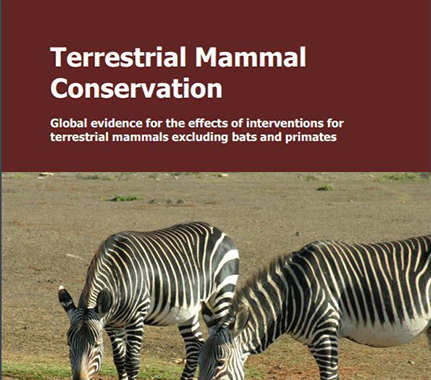
As conservationists, we often have to make important decisions in our work about what management actions to undertake – from putting up nest boxes to total habitat restoration. To do this correctly, we need to gather a wealth of information such as local site conditions, resource and policy constraints, and any past experience. We also need to consider whether there is any scientific evidence for the effectiveness of that management action. Often this last part is missed out, not due to unwillingness or complacency but because of barriers that make using scientific evidence difficult. These barriers include: no access to the scientific literature, off-putting jargon and technical language, uncertainty in the results, and a lack of time to get through the volume of literature available. To help overcome these barriers and make evidence use easier, the Conservation Evidence project at the University of Cambridge summarises all of the available scientific literature on conservation management actions in plain, jargon-free English and makes it available for free. They also provide tools and training in evidence use to make it easier to incorporate the scientific evidence along with a suite of other important information for effective decision-making.
To date, the Conservation Evidence team has scanned over 1 million papers and completed 17 synopses, each encompassing a taxonomic group or habitat. This has resulted in collating evidence for 2,105 management actions from 6,616 studies covering areas from forests to bees and birds.
This June sees the publication of the highly anticipated mammal synopsis covering all terrestrial mammals (excluding bats and primates, which have their own synopses). This task took the team four years, scanning all the major and specialised conservation journals in three languages. They collated the evidence for 294 management actions from 935 studies. These studies range from standard practices such as installing service corridors on road developments through to the somewhat more unusual, such as parachuting beavers to translocate them to a remote terrain (Heter 1950)!
This synopsis is the largest collection of evidence gathered on ways to conserve mammal species. Access to this information will help to make the use of evidence easier in mammal conservation. This aims to tackle a worrying finding we have made: that many commonly used management actions have no evidence behind them at all. This isn’t to say that these actions are bad and shouldn’t be used, but that we simply don’t know whether they are doing what they are supposed to be. We sometimes find that commonly used actions are ineffective or even harmful. For example, the mammal synopsis found a study from India that monitored the frequency of leopard attacks on humans and livestock after translocation away from human settlements, an action that was expected to reduce attacks (Arthreya et al. 2011). The translocation was shown to cause a significant increase in the frequency and fatality in livestock and human attacks after translocation. It was suggested that this was due to them being moved into already occupied territories as well as stress from translocation. This wastes time, money and resources, all of which are precious in conservation.
For 64 out of the 294 management actions there was no evidence found, despite these being management actions that are routinely carried out. For example, there were no studies investigating the effects of coppicing trees, a method often used to create beneficial habitat for dormice in the UK. These findings highlight how much more we need to do to fully understand how well we are conserving our mammal species. Through further work, the evidence base can be continually updated to expand our knowledge and improve the effectiveness of management actions. With the help of everyone who works with and studies mammals, we can make this happen!
Hd438@cam.ac.uk, @HarrietFDowney
References
Athreya, V., Odden, M., Linnel, J. & Karanth, U. (2011) Translocation as a tool for mitigating conflict with leopards in human dominated landscapes of India. Conservation Biology, 25, 133–141.
Heter, E.W. (1950) Transplanting beavers by airplane and parachute. The Journal of Wildlife Management, 14, 143–147.
Littlewood, N.A., Rocha, R., Smith, R.K., Martin, P.A., Lockhart, S.L., Schoonover, R.F., Wilman, E., Bladon, A.J., Sainsbury, K.A., Pimm, S. & Sutherland, W.J. (2020) Terrestrial Mammal Conservation: Global Evidence for the Effects of Interventions for terrestrial mammals excluding bats and primates. Synopses of Conservation Evidence Series. University of Cambridge, Cambridge, UK.